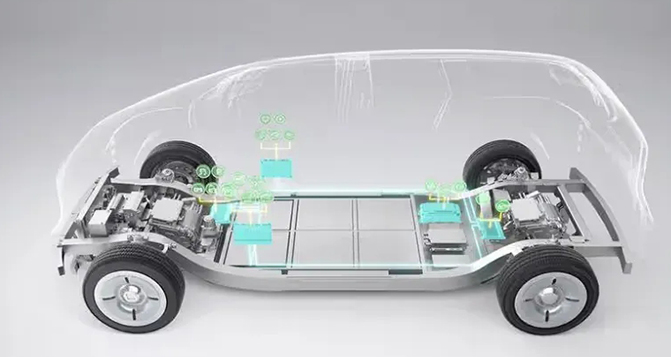In the past, the "chassis tuning" of traditional luxury cars was very powerful, but now, new technologies such as BYD's "turning around in place", the ideal "magic carpet suspension", and Tesla's "2.1 second breaking hundred body stability" are changing the rules of the game. A new dimension of competition - intelligent chassis technology - is redefining the way cars move with electronic signals and algorithms.

From "Steel Skeleton" to "Digital Nerve": The Transformation of Chassis
In the past, the chassis was just a mechanical system that relied on hydraulic, gear, and connecting rods to transmit power. Now, the chassis has become the "central motion control center" of the vehicle, which can not only passively respond, but also actively think, predict, and adjust.
Functional Evolution: From "Passive Execution" to "Active Control"
Traditional chassis: dominated by mechanical structures such as hydraulic steering and vacuum braking, relying entirely on the driver's operation.
Intelligent chassis: Based on a closed-loop system of "perception decision execution", it can adjust vehicle dynamics in real time. For example, the "Smart Digital Chassis" of SAIC Zhiji L6 coordinates steering, braking, and suspension through VMC (Vehicle Motion Control Center) to achieve six degrees of freedom dynamic control, making the body posture more stable.
Technological Revolution: Wire Control Technology Disrupts Mechanical Connections
Traditional method: The steering wheel is mechanically connected to the wheels through the steering column.
Intelligent way: The steering wheel is transmitted to the domain controller through electrical signals, and then executed by the motor, fully digitized. For example, the NIO ET9 eliminates the mechanical connection of the steering wheel and supports larger steering angles, providing a low-level interface for advanced autonomous driving. Bosch's new generation line control dynamic system has a response time of less than 150 milliseconds, greatly improving response speed and reducing mechanical delays.
The special challenge of hybrid technology: the "chassis intelligence" of oil electric synergy
Compared to pure electric vehicles, hybrid chassis needs to solve more complex problems:
Compatibility optimization of engine vibration and sudden changes in electric drive torque: For example, the CRBS coordination strategy of BYD DM-i achieves seamless integration of energy recovery and mechanical braking.
New trend: SAIC's extended range hydrogen fuel cell technology balances cost and performance through the "hydrogen electric hybrid" architecture, achieving an ultra-low hydrogen cost of 0.2 yuan per kilometer.
The core technology battlefield of intelligent chassis
The competition of intelligent chassis is essentially a competition of three major abilities: perception, computation, and execution
High precision sensor networks, such as 4D millimeter wave radar and vehicle attitude sensors.
Centralized domain control architecture: For example, Tesla's "chassis domain" integrates steering, braking, and suspension.
AI control algorithms: such as adaptive suspension for real-time learning of road conditions, Magic Carpet 2.0 version.
Industry Trends: Who is Leading? Who is chasing?
Tesla: Achieving ultra-high integration through integrated die-casting and chassis domain control.
BYD: Strengthen the competitiveness of high-end car models with the "Yunlian" intelligent body control system.
New forces (Ideal, NIO): Focus on "comfortable magic carpet" and "wire controlled steering" to create differentiated experiences.
Traditional car companies (Mercedes Benz, BMW): Accelerating the transformation of electronic architecture, but limited by the burden of fuel platforms.
As traditional chassis components gradually become "standardized commodities", the competitive focus of car companies is shifting towards "control algorithms" and "system integration capabilities". In the future, the chassis may become a presence similar to a computer host - mechanical components such as graphics cards and memory are plug and play, and their true value lies in the constantly evolving "operating system".
The impact on consumers
In the past, when we evaluated the chassis, we would say 'solid' and 'heavy'. In the future, you may hear descriptions like this: "After the OTA upgrade of this car's chassis, the G-value for cornering has increased by 0.1g.

